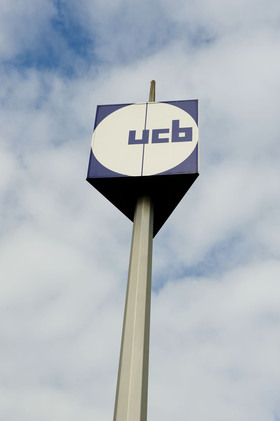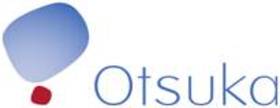E Keppra (levetiracetam) receives regulatory approval in Japan
Brussels, Belgium and Tokyo, Japan – July 23, 2010 at 7:00 am CET – regulated information - Otsuka Pharmaceutical Co., Ltd. (Head Office: Tokyo, Japan, President and Representative Director: Taro Iwamoto) and UCB (UCB Japan, Head Office: Tokyo, Japan, President and Representative Director: Emmanuel Caeymaex; UCB S.A., Head Office: Brussels, Belgium, CEO: Roch Doliveux) today announced that UCB Japan has received manufacturing and marketing approval from the Japanese Ministry of Health, Labor and Welfare (MHLW) for E Keppra® (250 mg and 500 mg Tablets). E Keppra® has been approved in Japan as adjunctive therapy in the treatment of partial onset seizures, with or without secondary generalisation, in adult patients with epilepsy, who have not obtained sufficient response to other antiepileptic drugs.
Levetiracetam was originally developed by UCB and is now marketed as Keppra® in over 90 countries worldwide. In Japan, it will be marketed under the brand name, E Keppra®. Otsuka Pharmaceutical and UCB will co-promote E Keppra® in Japan.
“Japan is the second largest pharmaceutical market in the world and it is a significant achievement that we will soon be able to provide E Keppra® for people living with epilepsy in this important country. E Keppra® is the first product from UCB's own world-leading CNS research and development programme to be marketed in Japan and we look forward to partnering with Otsuka Pharmaceutical for E Keppra® launch while continuing to bring new medicines for people with severe diseases.” said Roch Doliveux, Chief Executive Officer, UCB.
“We are pleased that we will soon be able to deliver this innovative product which has been long awaited by patients and healthcare professionals in Japan. For more than 10 years since its first approval, Keppra® (levetiracetam) has contributed to the treatment of patients with epilepsy in clinical settings. With our co-promotion partner UCB Japan, we will strive to communicate the new value of E Keppra® as an innovative therapeutic option in Japan.” said Taro Iwamoto, president and representative director of Otsuka Pharmaceutical.
Epilepsy is a chronic neurological disorder affecting more than 50 million people worldwide. In Japan, there are approximately one million people living with epilepsy. Epilepsy is caused by abnormal, excessive electrical discharges of the nerve cells or neurons in the brain. Epilepsy is characterized by a tendency to have recurrent seizures. There are many different seizure types and epileptic syndromes, and effective classification guides treatment and prognosis.
Notes to Editors:
For further information, please contact:
Antje Witte, Investor Relations, UCB
Tel: (+32) 2 559 94 14. antje.witte@ucb.com
Richard Simpson, Investor Relations, UCB
T +32.2.559.9494, richard.simpson@ucb.com
Nancy Nackaerts, External Communications, UCB
T +32.2.559.9264, nancy.nackaerts@ucb.com
Masamitsu Kitada, Public Relations Department, Otsuka Pharmaceutical Co., Ltd.
kitadams@otsuka.jp
About E Keppra®/Keppra®
E Keppra® (non-proprietary name: levetiracetam) is marketed as the brand name Keppra® outside Japan and is an antiepileptic drug with over 4.1 million patient years’ experience. Keppra® was first approved in 1999 (US) and 2000 (EU) as adjunctive therapy in the treatment of partial onset seizures in adults with epilepsy. Since then, it has received several supplemental indications as adjunctive therapy across both partial and generalised seizures types as well as paediatric use in the US and the EU. In the EU, Keppra® is also approved as monotherapy for the treatment of partial onset seizures in adults with epilepsy.
Keppra® in the European Union
In the European Union Keppra® is indicated as monotherapy in the treatment of partial onset seizures with or without secondary generalization in patients from 16 years of age with newly diagnosed epilepsy. Keppra® is indicated as adjunctive therapy in the treatment of partial onset seizures with or without secondary generalization in adults, infants and children from 1 month of age with epilepsy. Keppra® is indicated as adjunctive therapy in the treatment of myoclonic seizures in adults and adolescents from 12 years of age with Juvenile Myoclonic Epilepsy. Keppra® is indicated as adjunctive therapy in the treatment of primary generalized tonic-clonic seizures in adults and adolescents from 12 years of age with idiopathic generalized epilepsy. Keppra® concentrate is an alternative for patients when oral administration is temporarily not feasible.
Keppra® in the European Union – Important Safety Information
Contraindication: Keppra® is contraindicated in patients with hypersensitivity to levetiracetam or other pyrrolidone derivatives or any of the excipients. Special warnings and precautions for use: In accordance with clinical practice if Keppra® has to be discontinued it is recommended to withdraw it gradually. The administration of Keppra® to patients with renal impairment may require dose adjustment in patients with severely impaired hepatic function. Suicide, suicide attempt and suicidal ideation and behaviour have been reported in patients treated with antiepileptic agents (including levetiracetam). Patients should be monitored for signs or depression and/or suicidal ideation and behaviours and appropriate treatment should be considered. Undesirable effects: In pooled safety data from clinical studies conducted with Keppra® oral formulations in patients with partial onset seizures the most commonly reported undesirable effects were somnolence, asthenia and dizziness. In monotherapy the most commonly reported undesirable effects were fatigue and somnolence. In paediatric patients (4-16 years of age) the most commonly reported undesirable effects were somnolence, hostility, nervousness, emotional lability, agitation, anorexia, asthenia and headache. Safety results in paediatric patients were consistent with the safety profile of levetiracetam in older children aged 4-16 years. In a study conducted with adults and adolescents with myoclonic seizures the most commonly reported undesirable effects were headache and somnolence. In a study conducted with adults and children (4 to 65 years) with idiopathic generalized epilepsy with primary generalized tonic-clonic seizures the most commonly reported undesirable effect was fatigue. Undesirable effects that resulted from Keppra® intravenous use are similar to those associated with Keppra® oral use. The most frequently reported adverse reactions were dizziness, somnolence, headache and postural dizziness.
Please refer to the European summary of product characteristics for other adverse reactions and full prescribing and safety information http://www.ema.europa.eu/docs/en_GB/document_library/EPAR_-_Product_Information/human/000277/WC500041334.pdf
Keppra® in the U.S.
Keppra® tablets and oral solution are indicated as adjunctive therapy in the treatment of partial onset seizures in adults and children 4 years of age and older with epilepsy, myoclonic seizures in adults and adolescents 12 years of age and older with juvenile myoclonic epilepsy, and primary generalized tonic-clonic seizures in adults and children 6 years of age and older with idiopathic generalized epilepsy. Keppra® injection is indicated as adjunctive therapy in the treatment of primary generalized tonic-clonic seizures in adults with idiopathic generalized epilepsy, myoclonic seizures in adults with juvenile myoclonic epilepsy and partial onset seizures in adults with epilepsy. Keppra® injection is an alternative for patients when oral administration is temporarily not feasible.
Keppra® in the U.S. – Important Safety Information
Warnings & Precautions: Antiepileptic drugs (AEDs) increase the risk of suicidal thoughts or behaviour in patients taking these drugs for any indication. Patients treated with any AED for any indication should be monitored for the emergence or worsening of depression, suicidal thoughts or behaviour, and/or any unusual changes in mood or behaviour. Keppra® tablets and oral solution are associated with the occurrence of central nervous system adverse events including somnolence and fatigue, behavioral abnormalities (e.g., psychotic symptoms, suicidal ideation and other abnormalities), as well as hematological abnormalities. In adults experiencing partial onset seizures, Keppra® is also associated with co-ordination difficulties. Keppra® should be gradually withdrawn to minimize the potential of increased seizure frequency. Common adverse events: In adults experiencing partial onset seizures, the most common adverse events associated with Keppra® in combination with other AEDs were somnolence, asthenia, infection and dizziness. In pediatric patients 4-16 years of age experiencing partial onset seizures, the most common adverse events associated with Keppra® in combination with other AEDs were somnolence, accidental injury, hostility, nervousness and asthenia. In patients 12 years of age and older with juvenile myoclonic epilepsy, the most common adverse events associated with Keppra® in combination with other AEDs were somnolence, neck pain, and pharyngitis. In patients 6 years of age and older with idiopathic generalized epilepsy, the most common adverse event associated with Keppra® in combination with other AEDs was nasopharyngitis.
The adverse events that result from Keppra® injection use for primary generalized tonic-clonic seizures in adults with idiopathic generalized epilepsy, myoclonic seizures in adults with juvenile myoclonic epilepsy and partial onset seizures in adults with epilepsy include all of those associated with Keppra® tablets and oral solution.
US prescribing information is available at
http://www.keppraxr.com/includes/pdf/Keppra_circular_29E_04_2009.pdf
http://www.keppraxr.com/includes/pdf/Keppra_Injection_PI.pdf
About Otsuka Pharmaceutical Co., Ltd.
Founded in 1964, Otsuka Pharmaceutical Co., Ltd. is a global healthcare company with the corporate philosophy 'Otsuka-people creating new products for better health worldwide.’ Otsuka researches, develops, manufactures and markets innovative and original products, with a focus on pharmaceutical products for the treatment of diseases, and consumer products for the maintenance of everyday health. Otsuka is committed to being a corporation that creates global value, adhering to high ethical standards required of a company involved in human health and life, maintaining a dynamic corporate culture, and working in harmony with local communities and the natural environment.
About UCB
UCB, Brussels, Belgium is a biopharmaceutical company dedicated to the research, development and commercialization of innovative medicines with a focus on the fields of central nervous system and immunology disorders. Employing more than 9 000 people in over 40 countries, UCB produced revenue of EUR 3.1 billion in 2009. UCB is listed on Euronext Brussels (symbol: UCB).
UCB Japan (Tokyo, Japan) was established in 1988 as a subsidiary of UCB and is focused on the development and marketing of specialty medicines including biopharmaceuticals to treat patients living with severe diseases in Japan. Over the last 10 years UCB Japan has been engaged in marketing the anti-allergy drug Zyrtec® (cetirizine) among others. UCB has collaborations with Otsuka Pharmaceutical for E-Keppra®(levetiracetam), Cimzia®(certolizumab pegol) and Neupro® (rotigotine) in the Japanese market.
Forward looking statement
This press release contains forward-looking statements based on current plans, estimates and beliefs of management. Such statements are subject to risks and uncertainties that may cause actual results to be materially different from those that may be implied by such forward-looking statements contained in this press release. Important factors that could result in such differences include: changes in general economic, business and competitive conditions, effects of future judicial decisions, changes in regulation, exchange rate fluctuations and hiring and retention of its employees.
Asset Download
Stay up-to-date on the latest news and information from UCB


